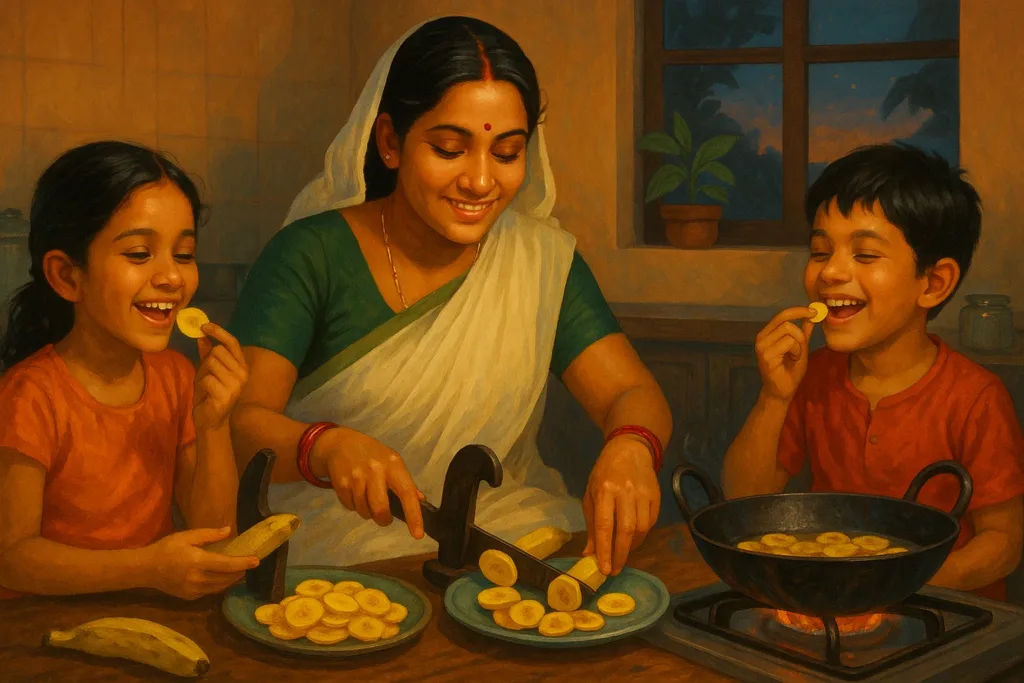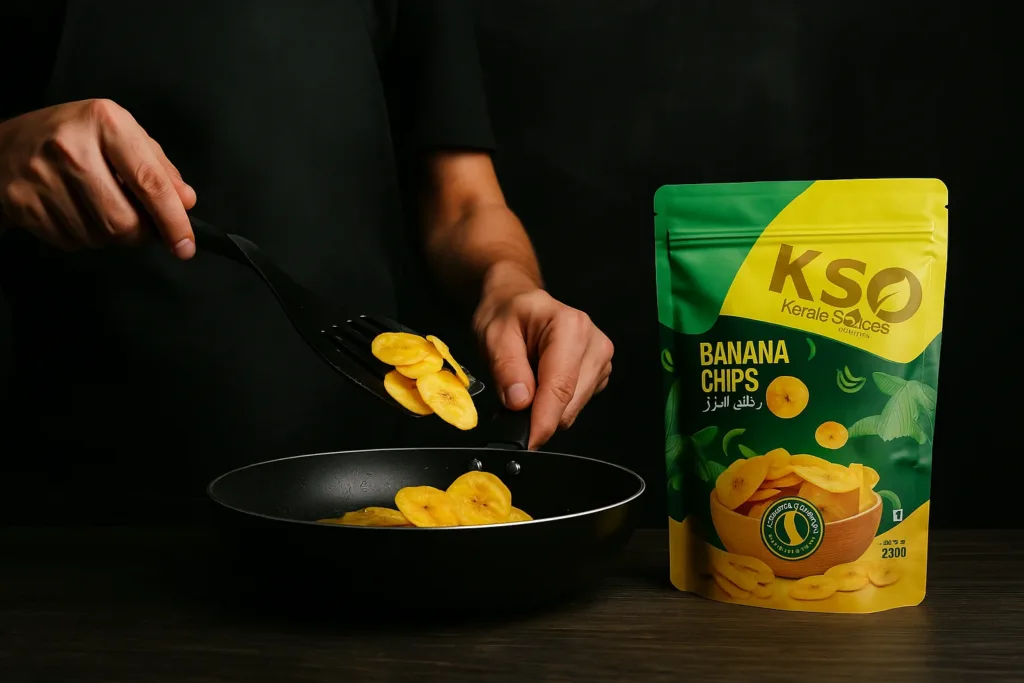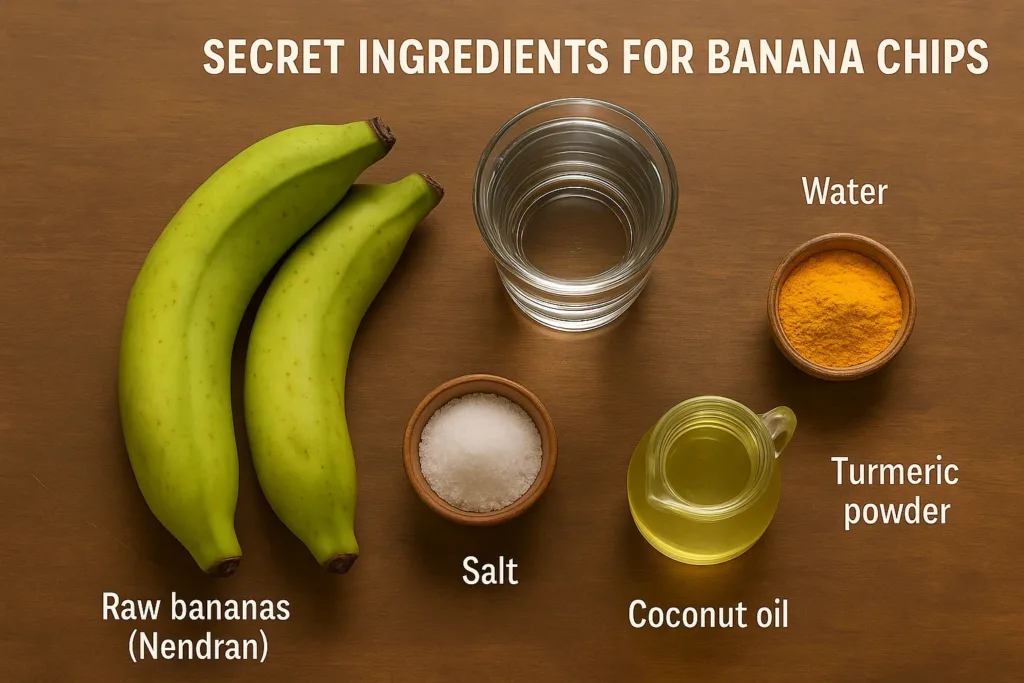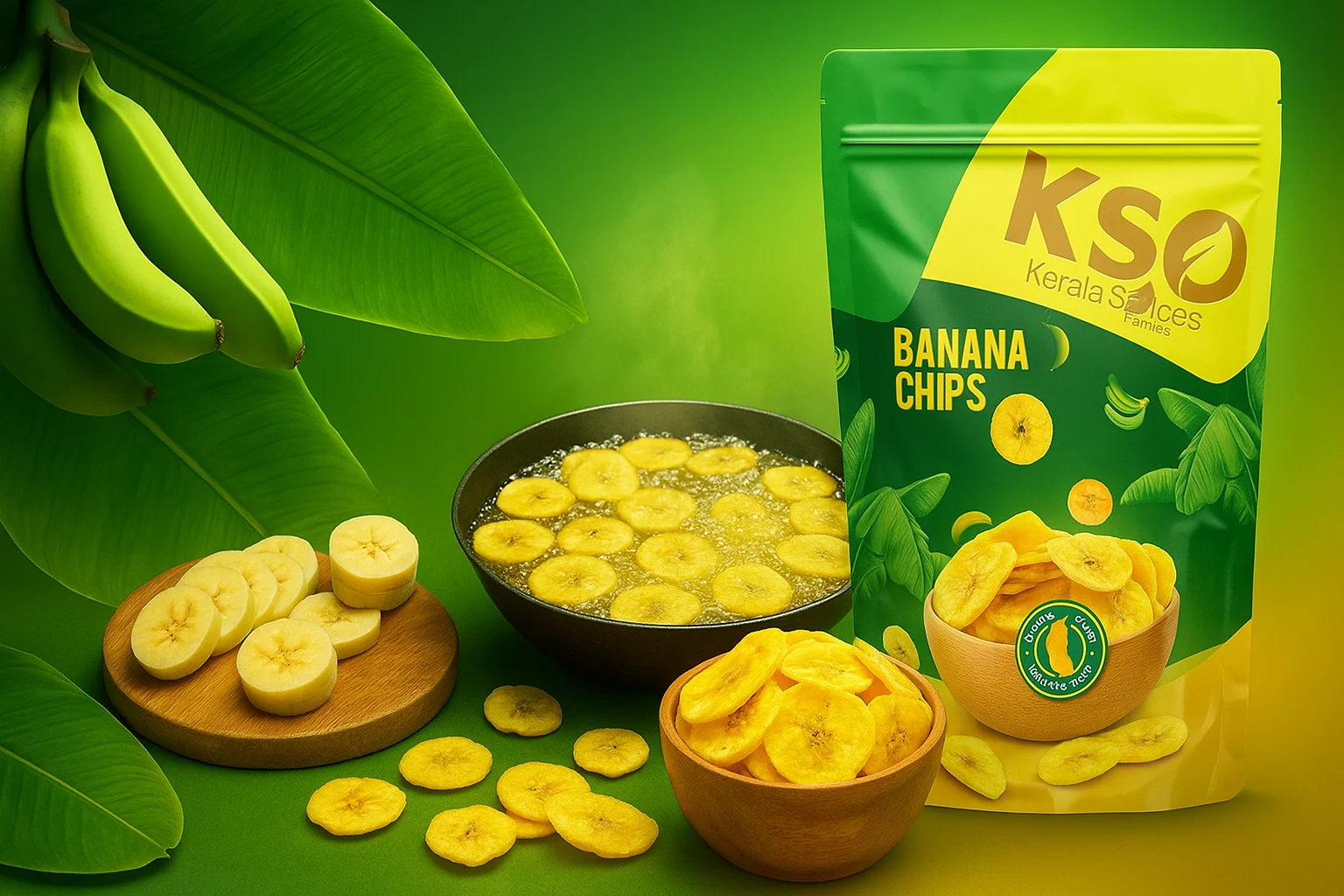There is a familiar comfort in the aroma of banana chips frying in coconut oil, especially during quiet evenings at home. For many, including those with vivid Keralite childhood memories, these crispy golden slices bring back moments of joy, family, and food.

Referred to fondly as “banana wafers,” Nendran chips were a household favorite often brought home by fathers returning from Kerala. More than just an evening snack, they represent the essence of traditional snacks and are a staple in the festive Sadya meal, especially during Onam. Served at the top left of the banana leaf, they hold a special place in Kerala cuisine. These homemade chips are also a beloved teatime snack, paired perfectly with a hot cup of South Indian filter coffee or chai. Let us look at how banana chips are made.
KSO’s Authentic Approach of Making Banana Chips

KSO takes pride in making traditional Kerala-style banana chips, and these are not just snacks; they are “ethakka upperi,” a name that signifies authenticity and taste.
What sets KSO banana chips apart is the use of unripe Nendran bananas and pure coconut oil. The firm texture of Nendran and coconut oil frying give the chips a crisp texture, vibrant colour, and a distinct flavour unmatched by store-bought options. The aim is simple to deliver an authentic, homemade taste in every bite using the traditional method and Kerala-style recipe.
The Secret Ingredients for Perfection

Here is a look at the banana chips ingredients that make KSO’s snacks so special:
- Raw bananas (Nendran): About three unripe Nendran bananas, the core ingredient.
- Water: Used for soaking and salt solution.
- Turmeric powder: Adds colour, prevents darkening, and acts as a mild preservative.
- Salt: For seasoning through a salt solution during frying.
- Coconut oil: Preferred for frying due to its traditional flavour and high smoke point.
These Kerala banana chips ingredients come together to preserve the snack’s authenticity and flavour.
From Farm to First Slice: Preparation Steps
- The banana chips preparation begins with selecting unripe Nendran bananas with green skin. They are cleaned, dried, and peeled.
- Next, the bananas are halved and soaked in a turmeric water solution (4 cups water + 1 tsp turmeric) for about 30–40 minutes. This removes stickiness, prevents discoloration, and gives them their classic yellow hue.
- A separate salt solution is made by mixing ½-cup water with 1-tablespoon salt. Before slicing bananas, it patted dry. Using a mandolin slicer, it helps to thinly sliced for even frying. For those without a slicer, a sharp knife can be used.
The Golden Fry: Cooking Steps
- Use heavy kadai for deep-frying banana chips and add 1.5 cups of coconut oil then it heated on medium. A test slice determines if the oil is ready. Chips are fried in small batches to avoid overcrowding and uneven cooking.
- As soon as slices hit the oil, they are stirred gently with a slotted spoon. Frying continues for 5–6 minutes until they start turning crisp. Then, adding salt solution of 1–2 teaspoons carefully, as the oil will sizzle. Use a splatter screen here.
- Continue frying for another 2–3 minutes until all bubbling stops. Chips are removed, drained, and transferred to a bowl or towel-lined tray to remove excess oil.
Pro Tips for the Perfect Batch
- Selection of Bananas: Select thoroughly unripe Nendran bananas having green skin to have the best traditional flavour and the crunchy texture. In case, Nendran is not available, other varieties of raw can be utilized, though there will be a change in taste and quality by a bit. Nendran is one of the most essential banana chips tips to achieve authentic results.
- Consistent Heat: Maintain a steady medium oil temperature while frying. The chips become soaked in excess oil when they are cooked in low heat, making them become soggy and when high heat is used, they cook unevenly.
- Slicing Precision: Thin slicing is key to making crispy banana chips. Use a slicer for accuracy and slices made with even medium thickness helps to produce good result and give the best crunch.
- Preventing Discoloration: If discoloration is to be avoided then one must immerse the peeled and sliced bananas in turmeric water or fry them after cutting. This will help in ensuring that they will not darken before frying, as they would have retained their bright yellow colour.
- Re-crisping Soft Chips: If the chips lose their crispness over time, they can be re-crisped easily. Bring a microwave or gently roast them in a pan or a wok to life after a minute or so.
Follow these banana chip tips and storage tips to make chip last in the shelves longer and prevent their staleness.
The Journey to Your Home: Packing Stage
Once cooled to room temperature, the chips are stored in airtight packaging to keep them crisp. Proper airtight storage helps extend shelf life with freshness for up to a few weeks at room temperature.
Use a dry spoon to avoid moisture contamination. At KSO, all our products are carefully prepared and use sealed bags ready for distribution, sharing the authentic taste of Kerala banana chips with the world.


